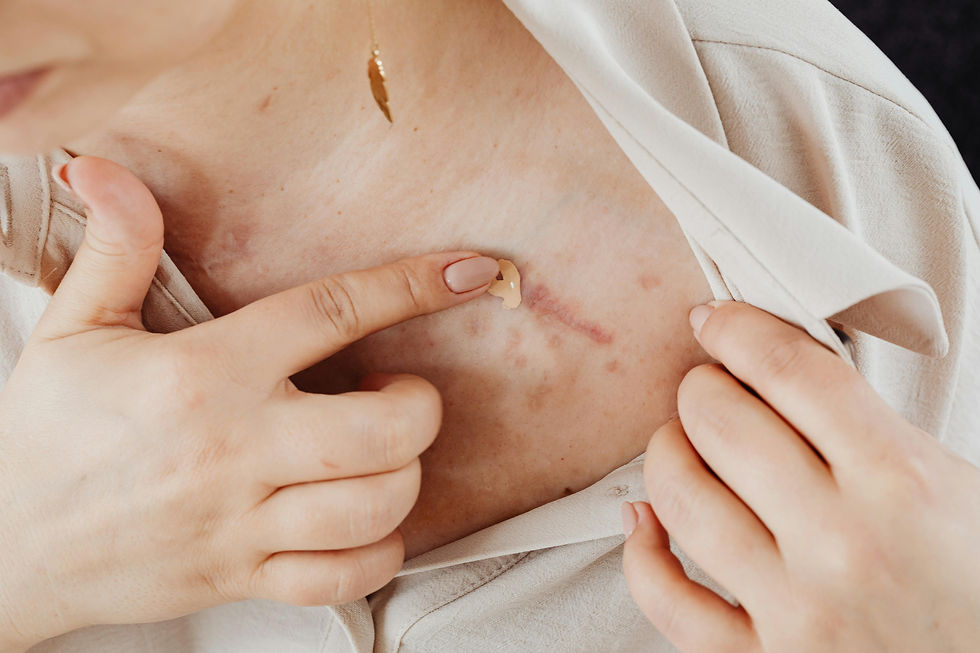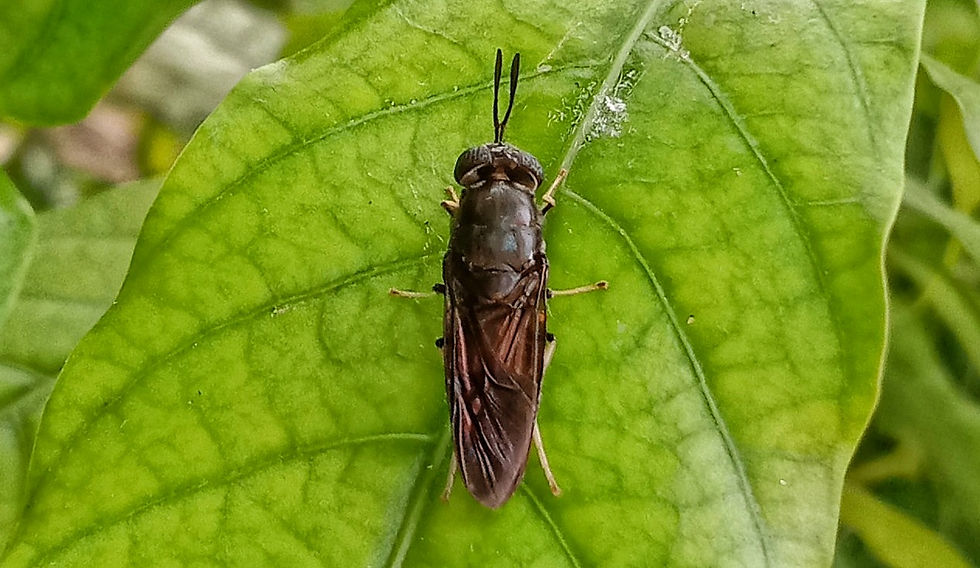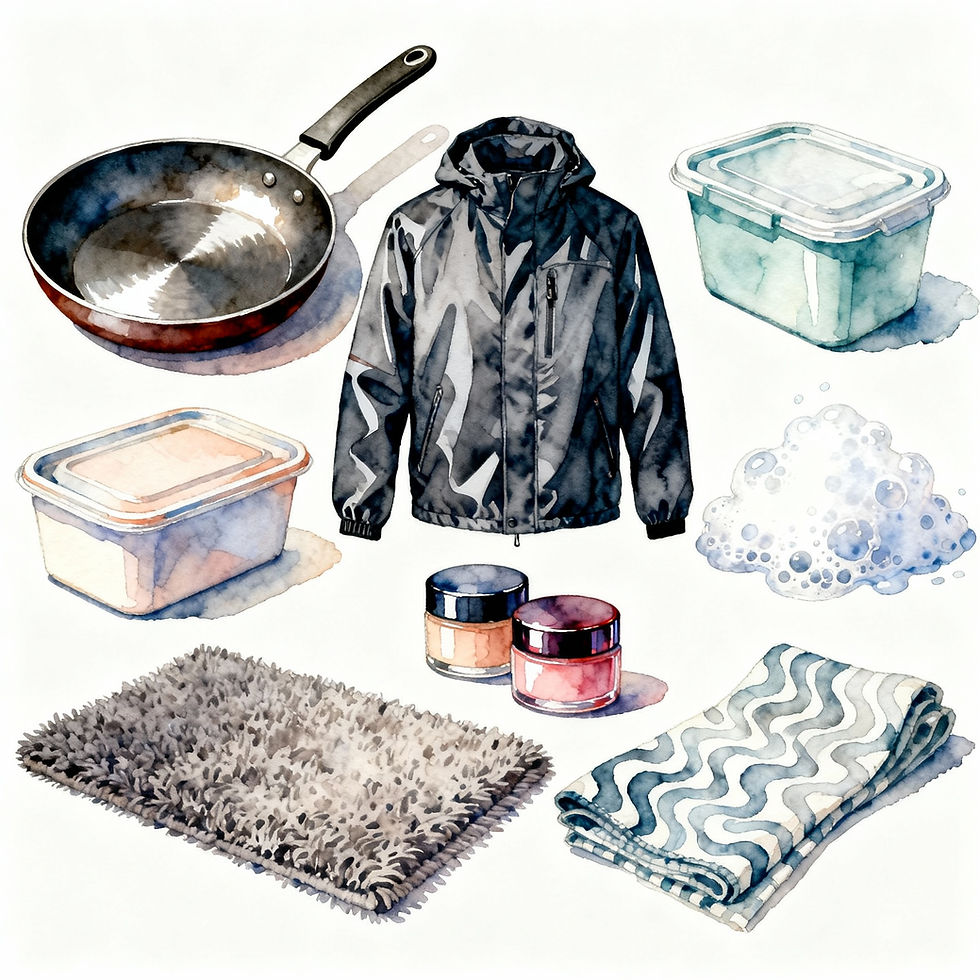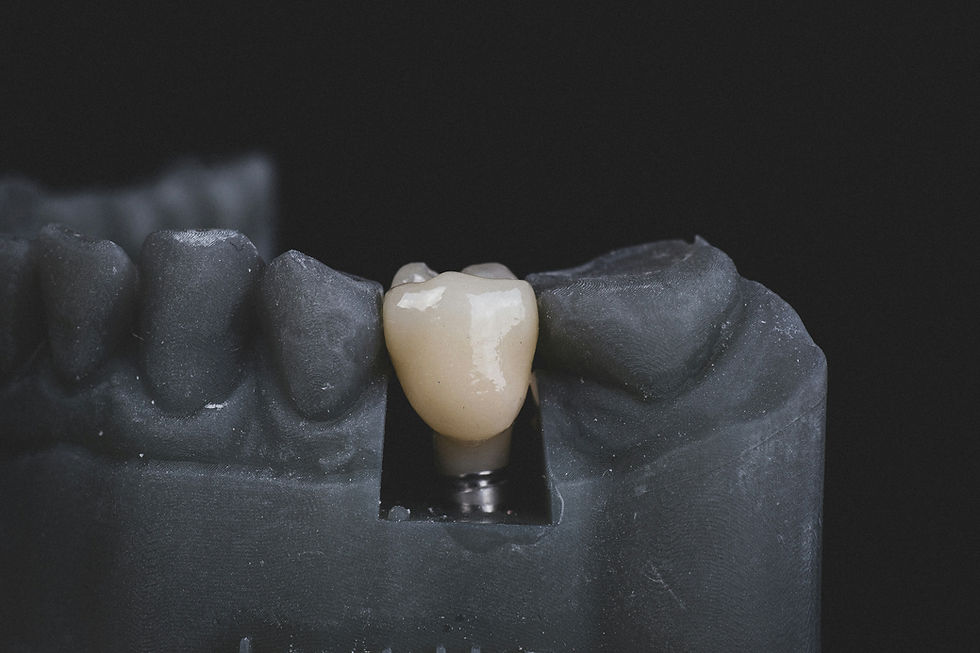Chitin and Chitosan In Scar Reduction and Cosmetic Innovation
- Entoplast

- Mar 6
- 7 min read

In recent years, the quest for sustainable, effective, and innovative ingredients in cosmetic formulations has led researchers and industry leaders alike to explore naturally derived biopolymers. Among these, chitin and its deacetylated derivative, chitosan, have emerged as promising candidates for scar reduction and wound healing applications. With the added advantage of being sourced from Black Soldier Flies (Hermetia Illucens), these biopolymers offer a solution to conventional ingredients, offering enhanced sustainability with scalable production.
In this article, we explore the chemistry and biological properties of chitin and chitosan, explain the benefits of sourcing them from Black Soldier Flies, review the underlying mechanisms that make them effective in reducing scar formation, and discuss how leading cosmetic companies are already incorporating these ingredients.
Understanding Chitin and Chitosan
Chitin is a natural polysaccharide found in the exoskeletons of arthropods, fungi, and certain insects. Structurally, it is a long-chain polymer of N-acetylglucosamine, which, upon partial deacetylation, forms chitosan. The chemical structure of chitosan endows it with several key properties, including biocompatibility, biodegradability, non-toxicity, and antimicrobial activity, all of which are highly prized in cosmetic and pharmaceutical applications (Morin-Crini et al., 2019).
Chitosan’s unique ability to form films, retain moisture, and promote cell proliferation makes it an excellent candidate for wound healing and scar management. Research has demonstrated that chitosan can accelerate the healing process by enhancing collagen synthesis and modulating the inflammatory response (Kojima et al., 2004). These properties have spurred its adoption in a variety of medical and cosmetic formulations designed to minimise scarring and improve skin appearance.
Extraction from Black Soldier Flies: A Sustainable Solution

Traditional sources of chitin typically include crustacean shells from shrimp and crabs, but these are often associated with seasonal availability, allergenic risks, and environmental concerns related to overfishing and waste management of harsh chemicals involved in extraction. In contrast, Black Soldier Flies present a highly sustainable and economically viable solution. These insects can be reared on organic waste streams, converting low-value materials into high-quality biopolymers while producing lower greenhouse gas emissions and minimal ecological impact (Siddiqui et al., 2022).
Recent studies have shown that chitin extracted from Black Soldier Fly larvae is comparable in quality to that obtained from traditional sources (Triunfo et al., 2022). In fact, yields can be optimised through controlled rearing and extraction processes, and the resulting chitin can be efficiently converted into chitosan with minimal chemical waste. This eco-friendly production method meets the rising demand for sustainable cosmetic ingredients.
Mechanisms Behind Scar Reduction
Scar formation is a complex process that involves wound closure, collagen deposition, and subsequent remodelling of the extracellular matrix. Chitosan’s mode of action in scar reduction is multifaceted:
Enhanced Wound Healing: Chitosan stimulates fibroblast proliferation and migration—key steps in the wound healing process. By promoting the early stages of tissue repair, chitosan helps establish a more organised collagen framework, thereby reducing the extent of scar tissue formation (Howling et al., 2001).
Moisture Retention and Barrier Function: Its excellent film-forming ability creates a protective barrier over the wound, which not only maintains a moist healing environment but also shields the wound from external contaminants. This barrier effect minimises irritation and secondary inflammation, both of which can exacerbate scarring (Miguel et al., 2019).
Antimicrobial Activity: Chitosan exhibits inherent antimicrobial properties that reduce the risk of infection—a common complication in wound healing. By limiting microbial proliferation, chitosan further supports a smoother and more efficient healing process (Dai et al., 2011).
Anti-Inflammatory Effects: Excessive inflammation is known to promote abnormal scar formation. Chitosan modulates the inflammatory response by downregulating pro-inflammatory cytokines, thus fostering an environment conducive to healthy tissue regeneration (Maita et al., 2022).
Together, these mechanisms not only accelerate wound closure but also improve the overall quality of the healed tissue, reducing the risk of hypertrophic scars and keloids.
Cosmetic Applications and Formulation Benefits

The cosmetic industry has long been at the forefront of incorporating advanced biomaterials into products that promote skin health. Chitin and chitosan are no exception, offering several formulation advantages:
Moisturisation and Film-Forming: Chitosan’s ability to form clear, flexible films makes it ideal for use in moisturisers, serums, and after-sun care products. This film not only locks in moisture but also provides a smooth finish on the skin, reducing the appearance of fine lines and scars (Jimtaisong & Saewan, 2014).
Compatibility with Other Actives: Chitosan works synergistically with other popular cosmetic ingredients such as hyaluronic acid, peptides, and antioxidants (Almalik et al., 2017). This compatibility allows formulators to create multi-functional products that address several aspects of skin aging and damage simultaneously.
Natural and Sustainable: With increasing consumer demand for eco-friendly and cruelty-free ingredients, chitosan derived from Black Soldier Flies stands out as an ideal candidate. Its sustainable production process aligns well with the values of modern, environmentally conscious consumers.
Market Trends and Economic Impact
The cosmetic market’s growing focus on anti-aging and scar reduction therapies has fuelled demand for innovative ingredients like chitosan. According to Grand View Research, the global chitosan market was valued at approximately USD 13 billion in 2023 and is projected to grow at a compound annual growth rate (CAGR) of around 20.3% through 2030. In parallel, the global scar treatment market is expected to reach USD 5 billion by 2030, driven by rising consumer awareness and technological advancements in cosmetic dermatology.
The integration of insect-derived chitin and chitosan into cosmetic products further amplifies this potential. With Black Soldier Fly farming gaining momentum worldwide, companies can now leverage a renewable resource that is not only cost-effective but also minimises environmental impact. For investors, this convergence of sustainable production and high market demand represents a compelling growth opportunity—especially for firms positioned at the forefront of this innovation.
Emerging Research on Black Soldier Fly Chitosan
Recent investigations have underscored the potential of Black Soldier Fly–derived chitin as an effective source for chitosan production. Studies indicate that with optimised extraction methods, the yields and purity of chitosan from Black Soldier Flies are comparable to those from traditional sources, with added benefits of sustainability and scalability (Triunfo et al., 2022). Such research is paving the way for its broader adoption in cosmetic and pharmaceutical formulations, offering a novel solution for scar reduction and skin regeneration.
Advantages for Scar Reduction: A Closer Look

Accelerated Healing and Collagen Organisation
Scar tissue forms when the body repairs deep wounds and is often associated with disorganised collagen deposition. Chitosan actively promotes a more organised collagen network during the healing process. Experimental data from wound models suggest that topical chitosan application can reduce scar tissue formation by up to 30% compared to untreated controls. This reduction is attributed to chitosan’s capacity to modulate fibroblast activity and cytokine production, ensuring a balanced and efficient repair process (Howling et al., 2001).
Reduced Inflammation and Infection Risk
Infections and prolonged inflammation are known risk factors for excessive scarring. Chitosan’s antimicrobial properties help minimise bacterial colonisation in wound sites, thereby reducing the incidence of infection—a critical factor in scar minimisation. Furthermore, by dampening the inflammatory response, chitosan prevents the overproduction of inflammatory mediators that can lead to hypertrophic scar formation. This dual action makes it particularly valuable in post-procedure skin care, where minimising complications is essential for optimal cosmetic outcomes.
Enhanced Skin Barrier Function
A robust skin barrier is essential not only for protecting against external aggressors but also for supporting intrinsic repair mechanisms. Chitosan’s film-forming ability creates a semi-permeable barrier over the wound (Lewandowska & Szulc, 2022). This barrier maintains moisture, reduces trans epidermal water loss, and facilitates a controlled healing environment. As a result, the skin is better equipped to regenerate normal tissue architecture rather than forming rigid scar tissue.
Future Perspectives in Cosmetic and Pharmaceutical Industries
As research continues to unveil the multifaceted benefits of chitin and chitosan, especially those derived from Black Soldier Flies, the potential applications in both cosmetics and pharmaceuticals are expanding. With increasing consumer demand for sustainable and natural ingredients, the cosmetic industry is set to witness a paradigm shift toward biologically derived actives that not only deliver superior performance but also support environmental stewardship.
Innovative applications of chitosan are emerging in advanced wound dressings, anti-aging products, and formulations specifically targeting scar reduction. Furthermore, the integration of these biopolymers in combination with other natural actives such as hyaluronic acid and plant-derived peptides, promises to transform skin care by offering multi-functional products that address various skin concerns simultaneously.
For investors and industry stakeholders, the growing market potential of chitin and chitosan is particularly attractive. With the global chitosan market and scar treatment market on robust growth trajectories, companies that adopt sustainable production techniques using Black Soldier Flies are poised to capture significant market share. The synergy between sustainability, efficacy, and market demand is driving rapid innovation, making this field one of the most exciting frontiers in cosmetic and biomedical research.
Conclusion
The evolving landscape of cosmetic science is increasingly shaped by the demand for sustainable, effective, and innovative ingredients. Chitin and chitosan offer a powerful solution for scar reduction and overall skin rejuvenation. Their unique combination of antimicrobial, anti-inflammatory, and regenerative properties has already garnered attention in industry, and is supported by robust market research forecasting continued growth in both the chitosan and scar treatment sectors.
For cosmetic formulators, academic researchers, and investors alike, the benefits of integrating insect-derived chitosan into products are clear: improved efficacy, enhanced sustainability, and a competitive edge in a rapidly evolving market.
Entoplast stands at the forefront of this innovation. With a commitment to quality and sustainability, Entoplast is a leading provider of chitin and chitosan for cosmetic, pharmaceutical and various other applications. Discover how our solutions can elevate your products. Reach out to us at hello@entoplast.com





Comments